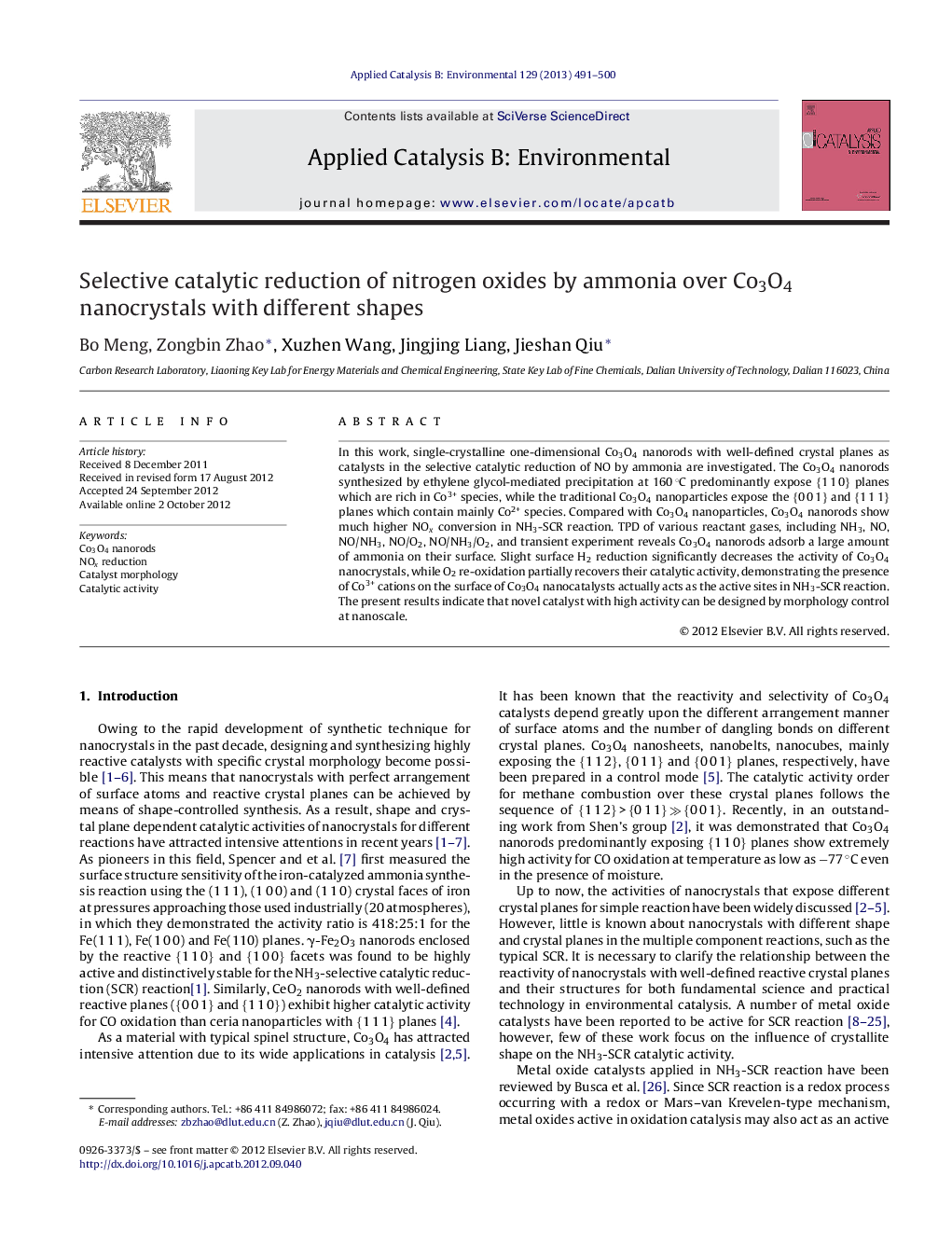| Article ID | Journal | Published Year | Pages | File Type |
|---|---|---|---|---|
| 46031 | Applied Catalysis B: Environmental | 2013 | 10 Pages |
In this work, single-crystalline one-dimensional Co3O4 nanorods with well-defined crystal planes as catalysts in the selective catalytic reduction of NO by ammonia are investigated. The Co3O4 nanorods synthesized by ethylene glycol-mediated precipitation at 160 °C predominantly expose {1 1 0} planes which are rich in Co3+ species, while the traditional Co3O4 nanoparticles expose the {0 0 1} and {1 1 1} planes which contain mainly Co2+ species. Compared with Co3O4 nanoparticles, Co3O4 nanorods show much higher NOx conversion in NH3-SCR reaction. TPD of various reactant gases, including NH3, NO, NO/NH3, NO/O2, NO/NH3/O2, and transient experiment reveals Co3O4 nanorods adsorb a large amount of ammonia on their surface. Slight surface H2 reduction significantly decreases the activity of Co3O4 nanocrystals, while O2 re-oxidation partially recovers their catalytic activity, demonstrating the presence of Co3+ cations on the surface of Co3O4 nanocatalysts actually acts as the active sites in NH3-SCR reaction. The present results indicate that novel catalyst with high activity can be designed by morphology control at nanoscale.
Graphical abstract.Figure optionsDownload full-size imageDownload as PowerPoint slideHighlights► Co3O4 nanocrystals (NCs) with controllable morphology have been synthesized. ► Co3O4 nanorods show higher NOx conversion than nanoparticles in NH3-SCR reaction. ► Co3O4 nanorods can absorb much more ammonia than nanoparticles during NH3-SCR reaction. ► Co3O4 nanorods predominantly expose {1 1 0} planes that are rich in Co3+ sites. ► Co3+ cations facilitate NH3 chemisorption and promote the catalytic activity.
